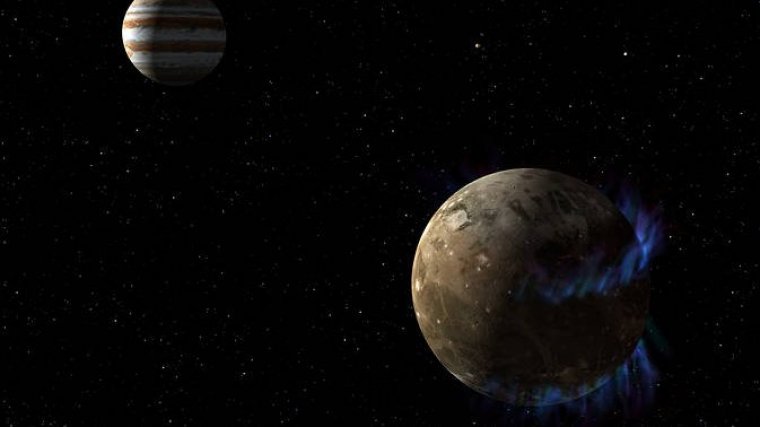| News / Space News |
Hubble Observations Suggest Underground Ocean on Jupiter's Largest Moon
NASA | MARCH 17, 2015
NASA’s Hubble Space Telescope has the best evidence yet for an underground saltwater ocean on Ganymede, Jupiter’s largest moon. The subterranean ocean is thought to have more water than all the water on Earth's surface.

In this artist’s concept, the moon Ganymede orbits the giant planet Jupiter. ![]()
Ganymede is the largest moon in our solar system and the only moon with its own magnetic field. The magnetic field causes aurorae, which are ribbons of glowing, hot electrified gas, in regions circling the north and south poles of the moon. Because Ganymede is close to Jupiter, it is also embedded in Jupiter’s magnetic field. When Jupiter’s magnetic field changes, the aurorae on Ganymede also change, “rocking” back and forth.
By watching the rocking motion of the two aurorae, scientists were able to determine that a large amount of saltwater exists beneath Ganymede’s crust affecting its magnetic field.
Scientists estimate the ocean is 100 kilometers thick – 10 times deeper than Earth's oceans – and is buried under a 150-kilometer crust of mostly ice.
YOU MAY ALSO LIKE
